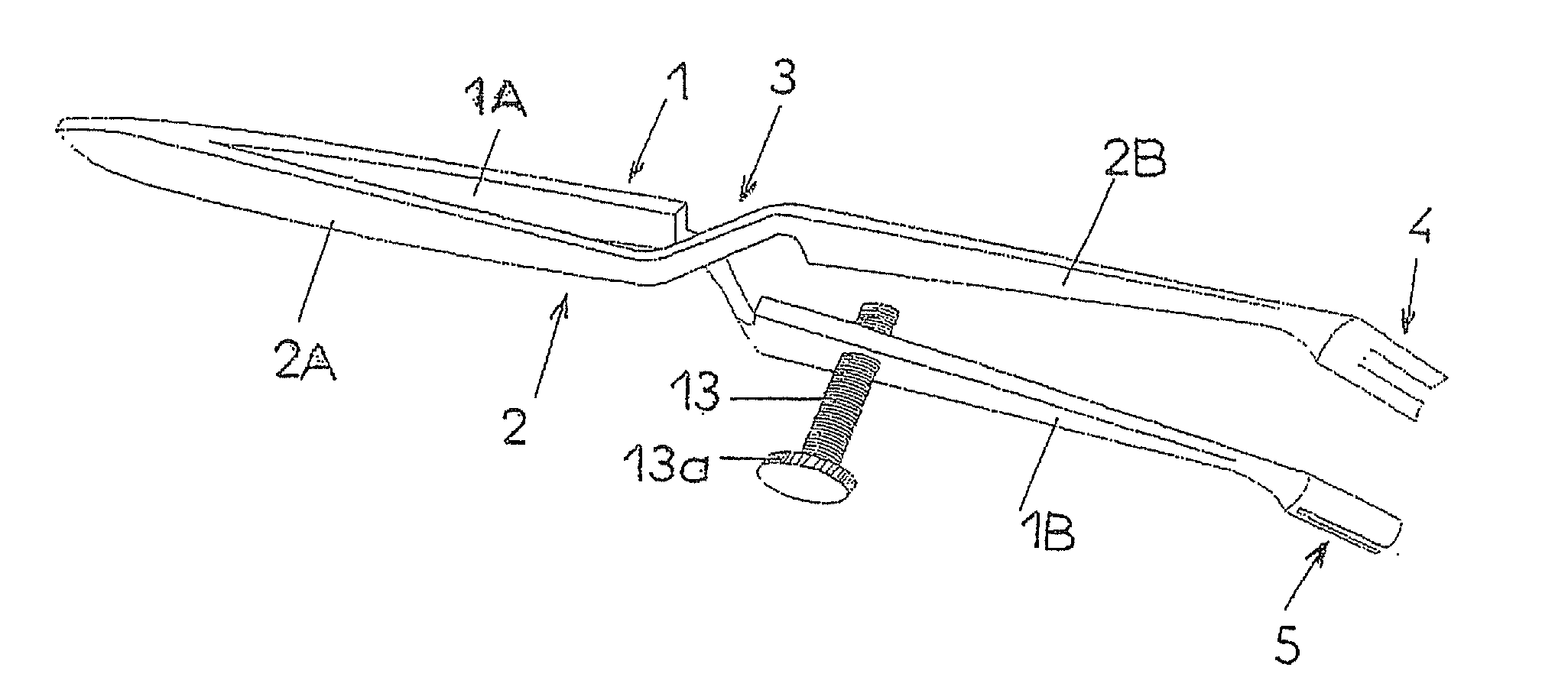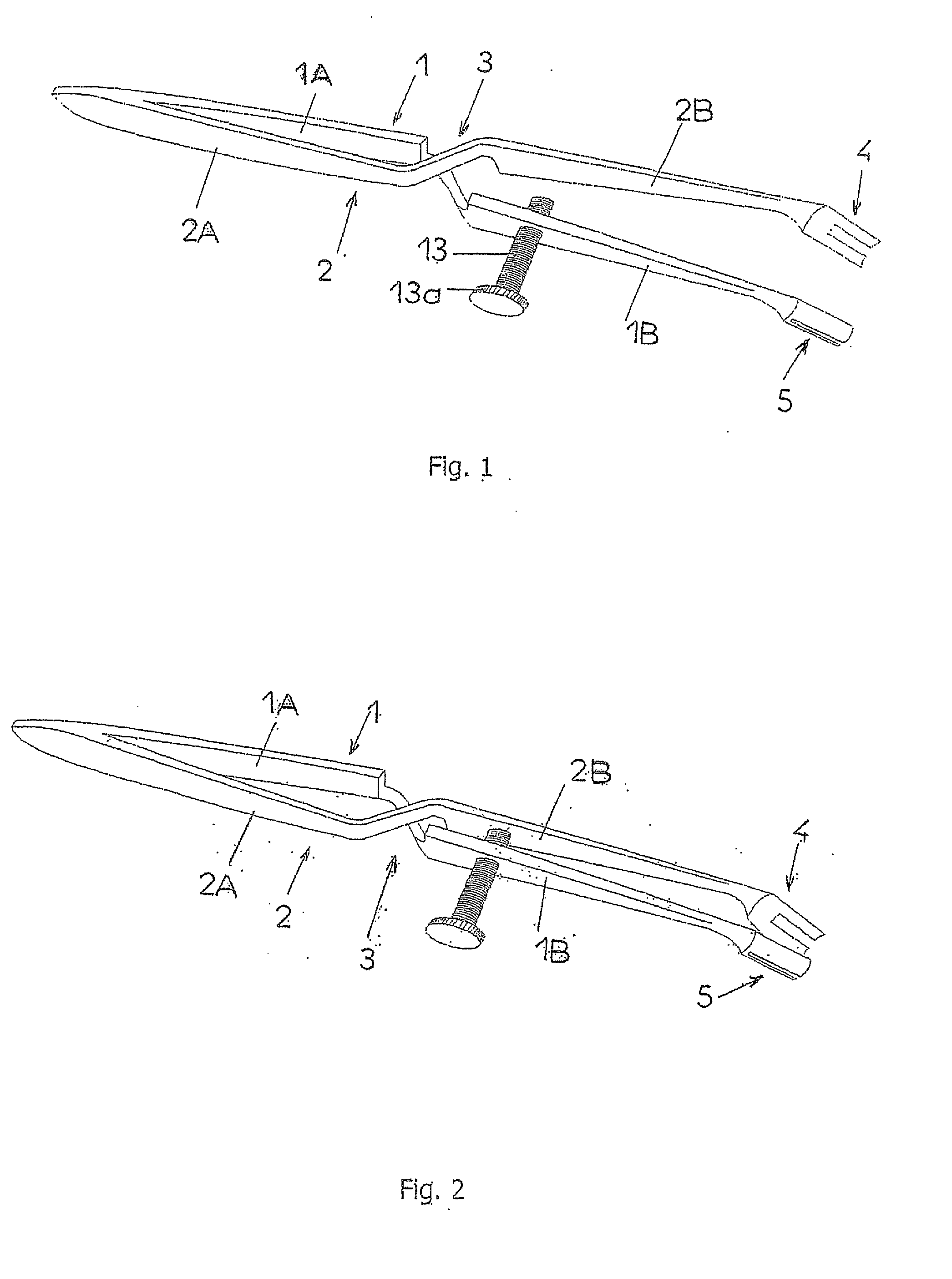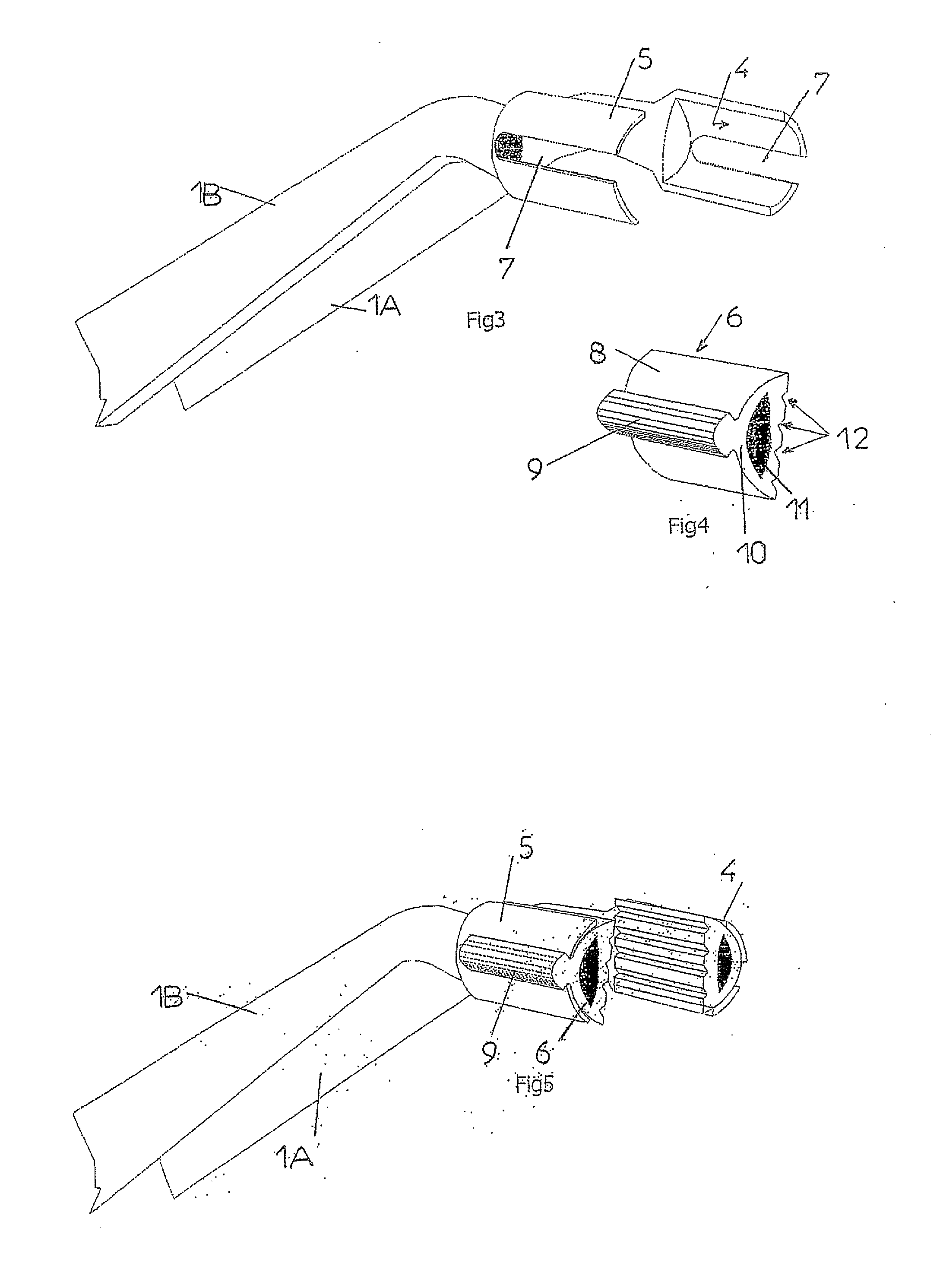Forceps for gripping and transporting small objects, usable in particular in dental surgery
- Summary
- Abstract
- Description
- Claims
- Application Information
AI Technical Summary
Benefits of technology
Problems solved by technology
Method used
Image
Examples
Embodiment Construction
[0021]Reference will be made to the said drawings in order to describe an example of an advantageous, but in no way limitative, embodiment of the forceps or tweezers according to the invention. In the following description, the expression “flexible material” denotes a material preferably but non-limitatively having a degree of hardness allowing for its deformation by at least one millimetre when a pressure of less than 5 N is applied to it for a contact area of 50 mm2.
[0022]According to FIGS. 1 and 2, the forceps shown are self-locking tweezers of the type made up of two arms 1 and 2, intersecting freely at their intermediate part 3 and comprising a proximal manoeuvring part or handle 1A, 2A and a distal gripping part 1B, 2B, extending on either side of their intersection zone 3. The arms 1 and 2 are essentially made from a metal having the ability to be flexible. The proximal parts 1A, 2A are elastically joined at one of their ends and spread apart progressively towards the interse...
PUM
 Login to View More
Login to View More Abstract
Description
Claims
Application Information
 Login to View More
Login to View More - R&D
- Intellectual Property
- Life Sciences
- Materials
- Tech Scout
- Unparalleled Data Quality
- Higher Quality Content
- 60% Fewer Hallucinations
Browse by: Latest US Patents, China's latest patents, Technical Efficacy Thesaurus, Application Domain, Technology Topic, Popular Technical Reports.
© 2025 PatSnap. All rights reserved.Legal|Privacy policy|Modern Slavery Act Transparency Statement|Sitemap|About US| Contact US: help@patsnap.com



